Good quality laboratory ovens are crucial to maintaining uniform temperatures throughout heating procedures. Lab ovens are used in a wide range of forced convection applications across different scientific disciplines. They are regarded as a common daily lab instrument, principally used for general heating routines such as drying, sterilizing, curing, and gentle heating of samples.
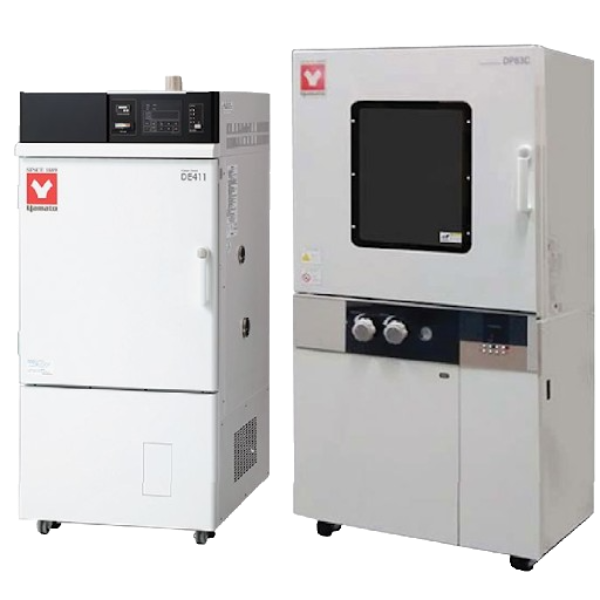
Nowadays, oven applications have expanded beyond simple drying and are widely present across diverse industries including healthcare, transportation, and technology industries. Lab ovens are also used in the fields of chemistry, biology, forensics, and pharmaceuticals.
Several manufacturers today offer a wide selection of ovens, each designed with a number of options and functions to meet different heating requirements. The differences in oven design and construction entail that not every oven can fit everyone’s needs. a result, end-users may find an increasing selection of oven capacities, configurations, and added safety features available in the market today.
Yamato Scientific has put together the essential factors to help you land the perfect oven. Read on as we tackle how to select the perfect unit by assessing your application requirements, deciding on the right oven configuration, design and features, and how you can work out the best price value for your oven.
1. Assess Your Application Requirements
What Types of Ovens Are Available?
Whether your research involves annealing, baking, drying, or sterilizing, many lab oven types are designed to suit different applications. Oven types are mainly classified into natural convection, forced convection, fine, vacuum, inert, and cleanroom. Each providing specific heat distribution properties and temperature uniformity for different application needs.
Below is a rundown of the various lab oven types and their application areas:
Natural Convection Oven (Gravity)
Natural Convection Ovens heavily rely on natural air circulation to heat the samples inside the oven. Through natural air circulation, gentle airflow movements keep the temperature fairly uniform within the chamber making it ideal for simple heating applications such as baking, drying, conditioning, pre-heating, aging, and curing.
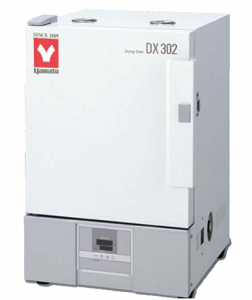
At Yamato, you can choose from natural convection units that come in types such as: DX Series Economical Ovens, DVS Series Basic Programmable Oven, DR201 High-temp Programmable Oven, and DG Series Glassware Drying Oven.
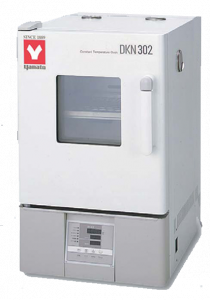
Forced Convection Ovens (Mechanical)
On the other hand, forced convection ovens – also often referred to as mechanical convection ovens, offer a more even heat distribution and faster drying time with a built in motorized fan. The oven’s motorized fan pushes air across the samples, allowing a more consistent air distribution within the chamber. Moreover, forced-air convection ovens are the best for applications that require a level of accuracy, precise temperature uniformity, multiple samples, and high moisture content.
Forced convection ovens can be used for general heating applications like general baking, heating, and drying glassware, rubber. They can also be used for complex heating procedures such as asphalt testing, conditioning, digestion of proteins and starches, drug metabolism, electronic burn in, epoxy and plastic curing, serum protein analysis, stability and QC batch testing, sterilization, suspended solids evaluation, and vulcanization studies.
If you find that mechanical ovens are the best choice for your application, take a look at Yamato’s DKM Series Economical Oven, DKN Series Programmable Oven, and DNE Series & DNF Series Energy-saving Programmable ovens.
Fine Ovens
For laboratories that require ovens with rapid and high airflow volume, fine ovens such as Yamato’s DF & DH Series Programmable Oven and DF & DH Series Large Capacity Programmable Oven should be considered, as these ovens use forced convection for a horizontal airflow pattern and offers quick exhaust and cooling.
Vacuum Ovens
Unlike natural and forced convection ovens, vacuum ovens such as Yamato’s ADP Series Benchtop Oven and DP Series Large Capacity Oven are used for samples that do not require convection of air. Dry air is introduced within the vacuum oven for a short time to absorb humidity then immediately extracted by a vacuum pump. Applications such as desiccating, low temp. drying, aging tests, moisture determination, and chemical resistance studies, are best performed in vacuum ovens.
Download the Complete Guide to Buying The Perfect Lab Oven here
Inert Ovens
For applications that need heating in an oxygen-free atmosphere to prevent oxygen from corroding or scaling the samples, inert atmosphere ovens like Yamato’s DN Series Inert Gas Oven replaces the oxygen with non-flammable gas such as N2 within the chamber to protect parts from oxidation.
Cleanroom Ovens
Some laboratories might require applications done in low level of pollutants like airborne microbes, particles, and vapors. Cleanroom oven is a must for samples that require a clean air environment. This type of oven employs a HEPA filter that can achieve Class 100 cleanliness and can minimize or completely eliminate particle contamination.

Yamato Scientific features cleanroom ovens in DE & DT Series Forced Convection Ovens and DES & DTS Series Large Capacity Forced Convection Oven both designed to meet class 100 clean room processes.
What Are The Different Oven Airflow Patterns?
Airflow plays an important role in achieving temperature uniformity. There are two airflows available for Yamato ovens: horizontal and vertical.
Horizontal Airflow Pattern
Ovens with a horizontal airflow pattern like Yamato’s High Temperature Fine Ovens and Cleanroom Ovens use forced convection to direct heated air in a horizontal pattern. The heated air is pushed from the smaller holes on the side of the chamber, passing through the sample and work chamber, then air is collected in the larger holes on the opposite side. Ovens with horizontal airflow are usually ideal for models equipped with multiple horizontal tiers of products or trays loaded.
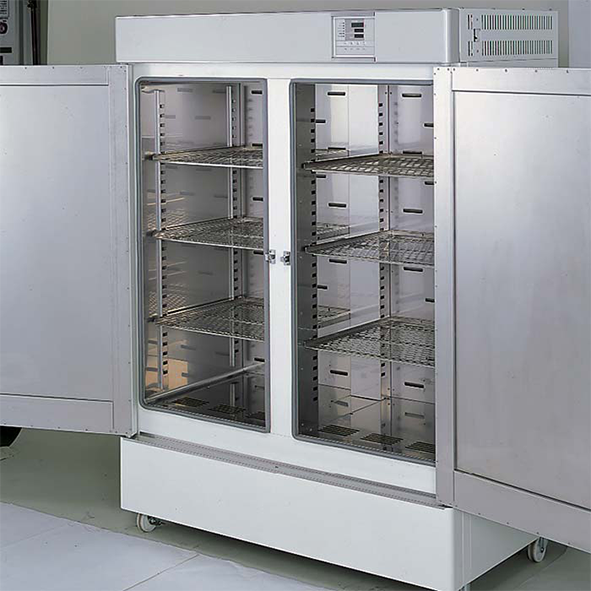
Vertical Airflow Pattern
Ideal for drying samples that require low turbulence environment, ovens with vertical airflow provide excellent temperature uniformity. Heated air is supplied at the bottom and pushed upward through the workload. Models from Yamato’s Forced Convection and Inert Ovens have vertical airflow pattern.
It is important to note that working with a large number of shelves may affect oven operation and restrict air flow due to the vertical airflow.
What Temperature Range does your Application Need?
Selecting the right oven temperature capacity for your application is vital in obtaining successful results. When considering the oven temperature range, it is important to identify your application’s absolute minimum and maximum temperature requirements. This way, you can pick out a model with a max temp rating higher than what your test requires and eliminate everything lower than your minimum target range.
Ideally, look for a model with a maximum temperature capacity higher than what your application requires. This will give you more flexibility when handling different tests and ensure greater accuracy & uniformity during routine procedures.
Depending on the model, a standard oven has a set temperature from ambient to a maximum 200°C to 300°C. If your application requires a higher temperature range than what standard ovens offer, opt for high temperature ovens like Yamato Scientific’s DR200 Natural Convection Oven, DN Series Inert Ovens and DTS Series Cleanroom Ovens. However, if your target temperature is limited, It’s best not go for high temperature ovens as this will cost more and have larger footprint.
What is Your Application Size and Volume Requirements?
Laboratory ovens are not standard in size. Deciding on the oven’s size depends on identifying your laboratory space constraints and your applications volume size.
If space is not an issue, then size shouldn’t be much of a problem. Although, if the lab space is limited, ovens with benchtop or stacked configurations are worth adding to your options as they save a considerable amount of space. Yamato’s benchtop models are available in natural ovens, forced ovens, and vacuum ovens.
Bear in mind that it’s not always best to opt for ovens larger than what you actually need. Not only will it cost more, it will also take up more lab space and will increase your daily operational expenses since larger ovens need more energy to reach the set temperature. For facilities that require large volumes of small samples, opt for multiple smaller ovens or you can also invest in multi chamber or stacked ovens like C1-006 forced convection oven.
If you’re interested in large capacity ovens, Yamato provides a wide selection of ovens ranging from 300L to 1000L volume capacities in their DG natural ovens, DKN, DNE, DNF forced ovens, DF, DH fine ovens, and DP large and industrial vacuum ovens.
2. Oven Design and Features
What Features Are Important to You?
Laboratory oven models range from having practical to over-the-top features. But before diving into ovens with attractive oven features that you might not even need, remember that long list of features often translate to a higher price tag. To help you focus on what’s important, we’ve listed key features you should look for in your oven
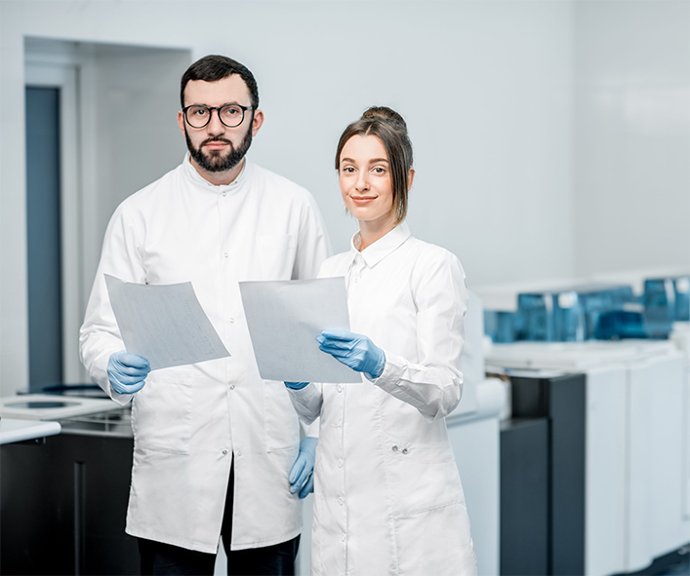
Safety and Reliability
Even though ovens are considered as a staple day-to-day lab instrument, these units still pose potential threats such as contaminant generation, overheating of samples, and proneness to fire and explosions. Which is why finding reliable ovens with the right safety features for your application is necessary to protect both samples and users.
Search for ovens built with quality materials and reliable thermal and control units. It’s important to pay attention to certificates of compliance with internationally recognized and accepted standards. Yamato’s ovens are designed under stringent quality control and facilities that are certified ISO9001, ISO14001, and OHSAS 18001.
If you’re leaning towards natural ovens, remember to choose a model that offers safety features that prevent overheating, fast heat up and recovery time, and great temperature uniformity. At Yamato, you can find natural convection ovens equipped with state of the art safety features including self-diagnostic functions, overheat protection, and over current leakage breaker to name a few.
Additional safety features that may come as a plus are viewing windows, adjustable shelves, door alarms, and lockable doors. You can also opt for ovens that automatically shows warnings when the temperature is above a certain point and can only be opened once it cools off.
Energy Consumption and Efficiency
Laboratory ovens used for heating and drying processes often run for long periods of time and with high temperature protocols. At the end of the day, your oven will be the most substantial energy load that will consume large amounts of electricity. Which is why selecting ovens with an optimal energy footprint can help provide you with significant savings over time.
Look for ovens constructed with great thermal insulation that reduce thermal transfer rates. This will prevent the generated heat from leaking out of the chamber and reduce wasted energy. If you’re looking for energy-efficient ovens, try Yamato’s DNE or DNF ECO saving units.
Maintenance and Cleaning
Looking for ovens that make it easy to conduct maintenance sessions go a long way in cutting down unnecessary disruptions to your laboratory’s operations. On top of low-maintenance ovens, make sure to select models with easily removable trays and doors that open widely enough for users to simply clean the oven’s chamber.
Timer
Oven units equipped with timers are a more favorable choice for short-staffed facilities.
Data Logging Capabilities
Some laboratory ovens offer data logging capabilities to provide users a more consistent production of result. Ovens equipped with data logs present you with the option to measure temperature profiles during routine procedures. This enables users to save process values, setpoints, alarms, and can also help improve or make any corrections to a process.
Additional Shelves
Check the oven’s number of shelves provided and the number of possible shelf positions if additional shelves may be needed.
3. Deciding on Your Lab Budget
If you have worked out a budget and are looking for brand new lab ovens, browse through Yamato’s diverse selection of new laboratory ovens.
For facilities looking for cost-efficient alternative from new oven models, Yamato, from time to time, features reliable phased-out and refurbished ovens offered at a fraction of the price.

Savings you get from buying these equipment will make more room in your budget for new equipment or supplies that you really need.
At Yamato, you will find phased-out & refurbished lab ovens that have been serviced and tested to meet the highest of industry standards. Many sellers
will offer you used equipment but few of them invest in the expertise to test, diagnose, and repair sophisticated scientific instrumentation such as ours.
With over 125 years of experience in the industry, Yamato Scientific America is equipped with providing utmost quality service and high performing products in the scientific market. All products are manufactured in compliance with stringent quality standards and international regulatory requirements.
Whether you are ready to make a purchase or still need to do more research, Yamato Scientific America is here to help.
Download the Complete Guide to Buying The Perfect Lab Oven here
